Local Native Trees, Shrubs & Vines
| Plant Details | |
| Common Name Trumpet Honeysuckle Botanical Name Lonicera sempervirens This vine is found in average garden soils. Handles some shade to full sun. Its deep, coral colored flowers bloom in the late spring and will go into December with mild conditions. The hummingbirds love it! Grows 4 to 15 feet depending on its support structure. Trumpet Honeysuckle Details |
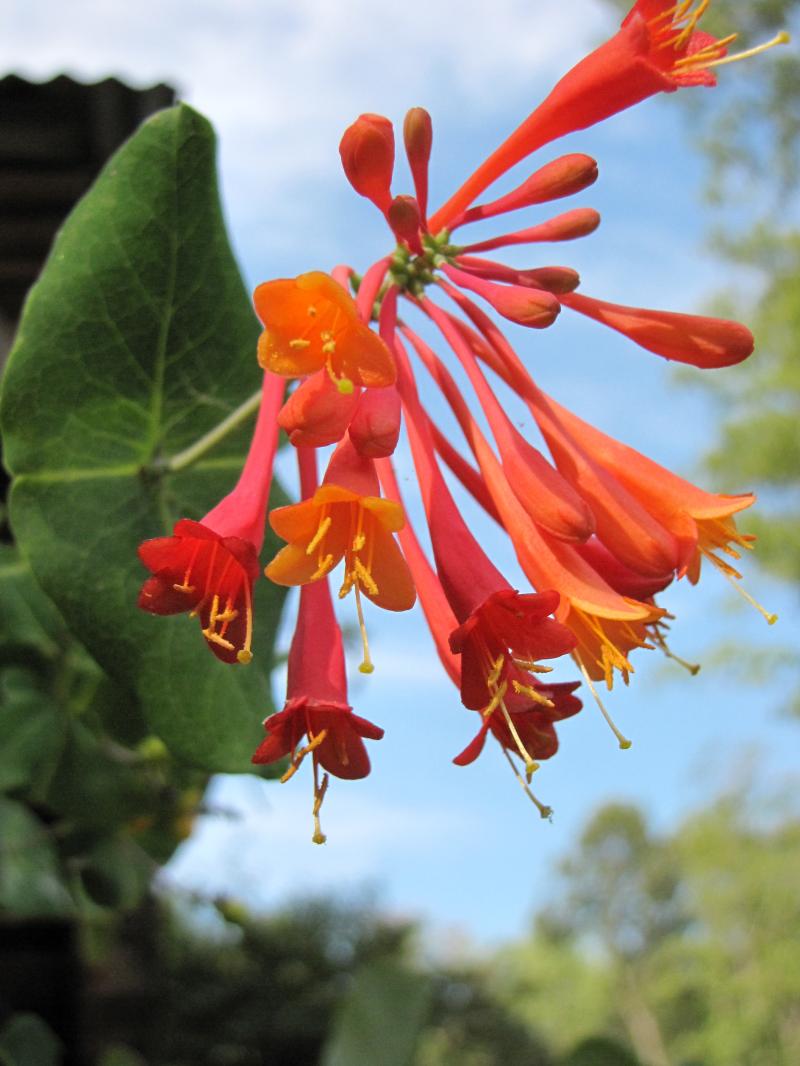 |
| Common Name Maleberry Botanical Name Lyonia ligustrina This shrub provides shelter and food to wildlife. It grows 3-12 feet tall and prefers moist, acidic, sandy soil conditions. Its white flowers bloom in the early summer. Then it develops a reddish-brown capsule that splits open when ripened. It has grayish green foliage. Maleberry Details |
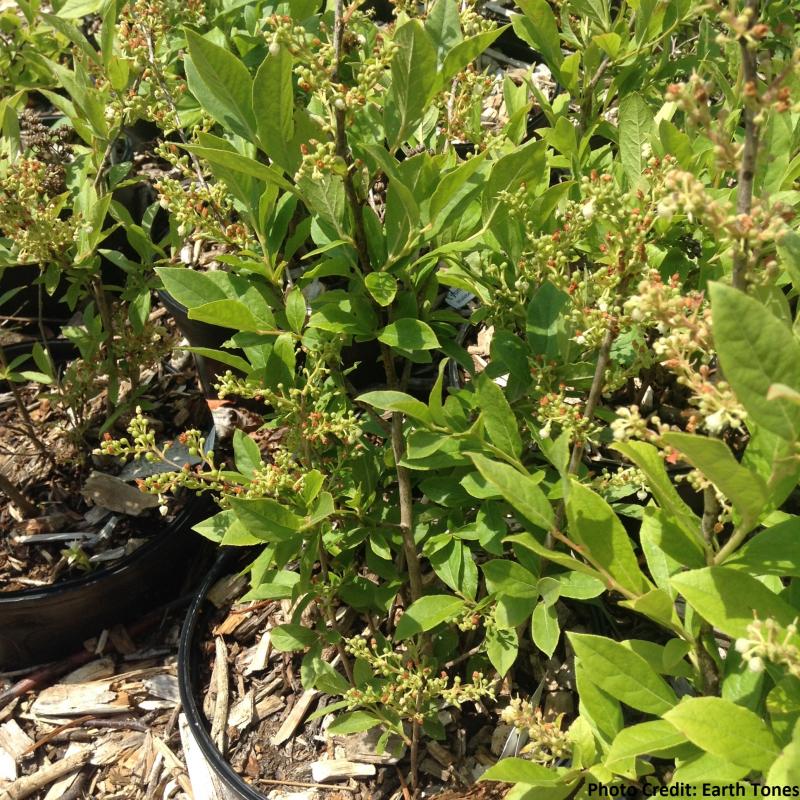 |
| Common Name Northern Bayberry Botanical Name Morella caroliniensis (Myrica pennsylvanica) This shrub grows 5-12 feet high and wide. Thrives in poor, sandy soils. Prefers full sun to partial shade. Its waxy, aromatic berries can be used for making candles but is also an excellent food source for birds. Salt tolerant. It requires a male and female pairing to produce fruit. Northern Bayberry Details |
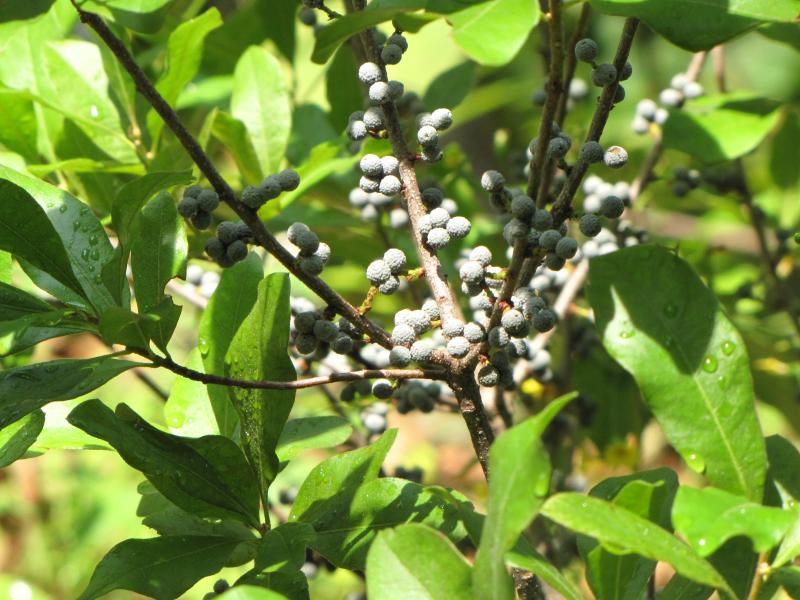 |
| Common Name Sweetgale Botanical Name Myrica gale The long, gray-green leaves of this shrub have a pleasant, sweet scent! Grows 2-4 feet tall. refers moist to wet soil conditions in a partially sunny location. Produces yellow-green catkins in the early summer. Sweetgale Details |
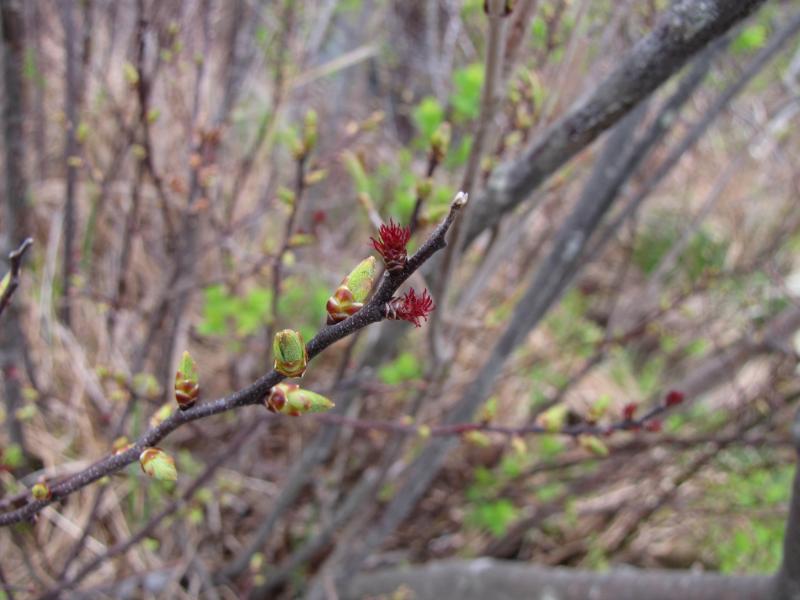 |
| Common Name Black Gum Botanical Name Nyssa sylvatica This is a tree for wet soils. It can reach 80 feet tall and has a spread of 20 to 35 feet. It has glossy dark green leaves in summer which turn brilliant red in the fall. Branches twist and make a nice winter feature. This tree can be dioecious but it is also co-sexual and monoecious. Black Gum Details |
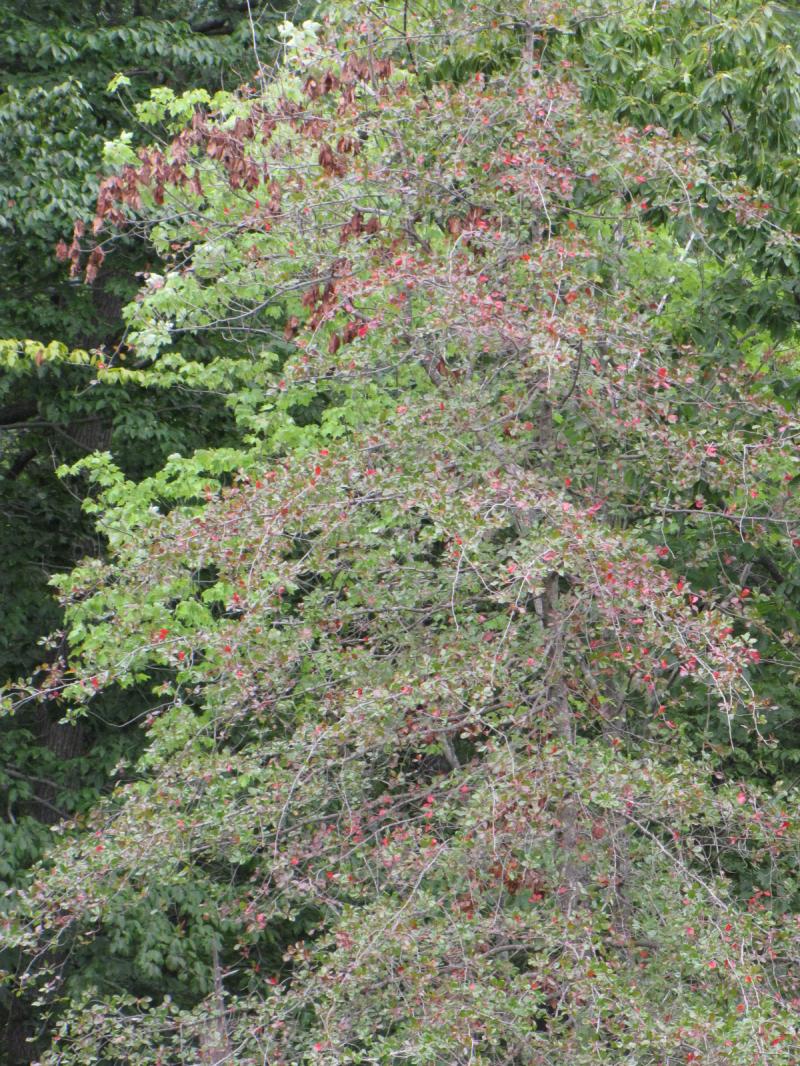 |
| Common Name Hop Hornbeam or Ironwood Botanical Name Ostrya virginiana A small tree found in the understory and along slopes. It grows 20 to 45 feet and is 10 to 20 feet wide. You can't miss its smooth, gray muscle looking stem. Can handle drier sites. Seeds provide a food source for many woodland species. Hop Hornbeam or Ironwood Details |
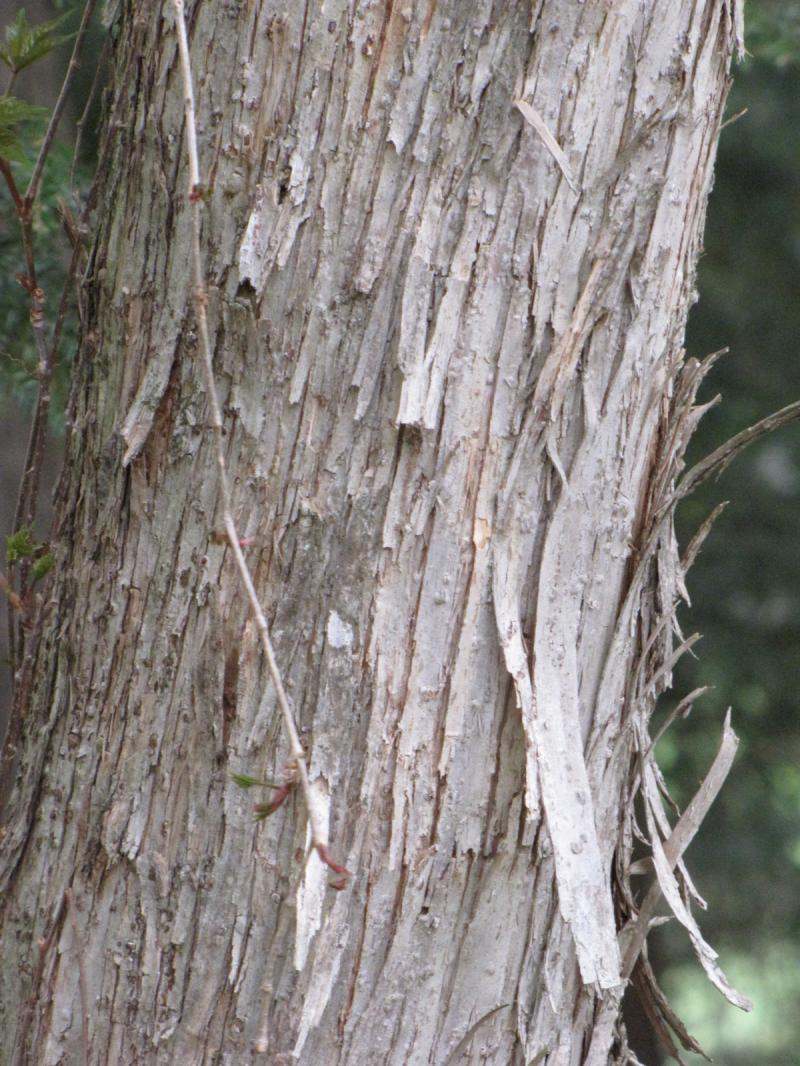 |
| Common Name Virginia Creeper Botanical Name Parthenocissus quinquefolia This vine grows 30-40 feet. It has dark green leaflets that turn purple to crimson in the fall. It produces bluish-black berries around September. Great food source for the birds. Can handle a variety of soil conditions. Excellent, tough, low-maintenance vine! Virginia Creeper Details |
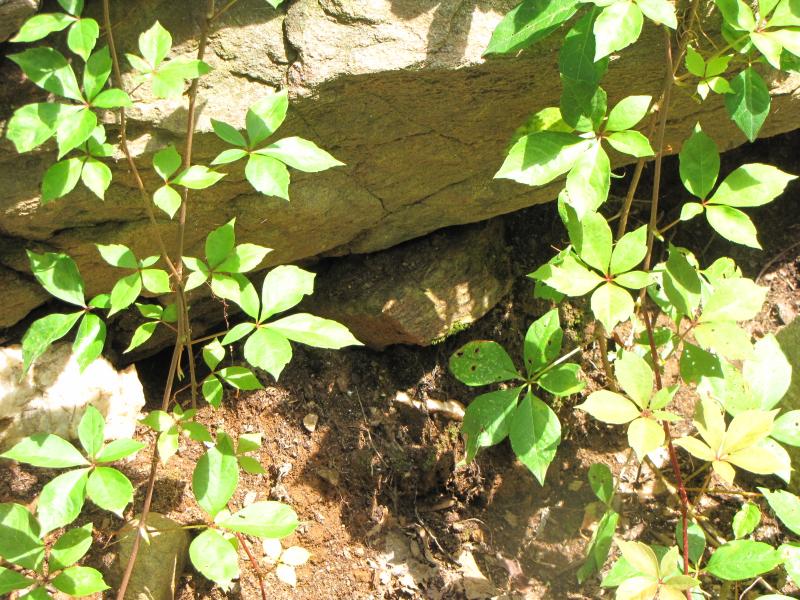 |
| Common Name Common Ninebark Botanical Name Physocarpus opulifolius This shrub's name is derived from its excessive peeling bark. It is said to have nine layers! It grows 5- 8 feet tall. White to pale pink flowers appear in the spring followed by red seed capsules. It prefers a partially sunny location with well-drained soil. Common Ninebark Details |
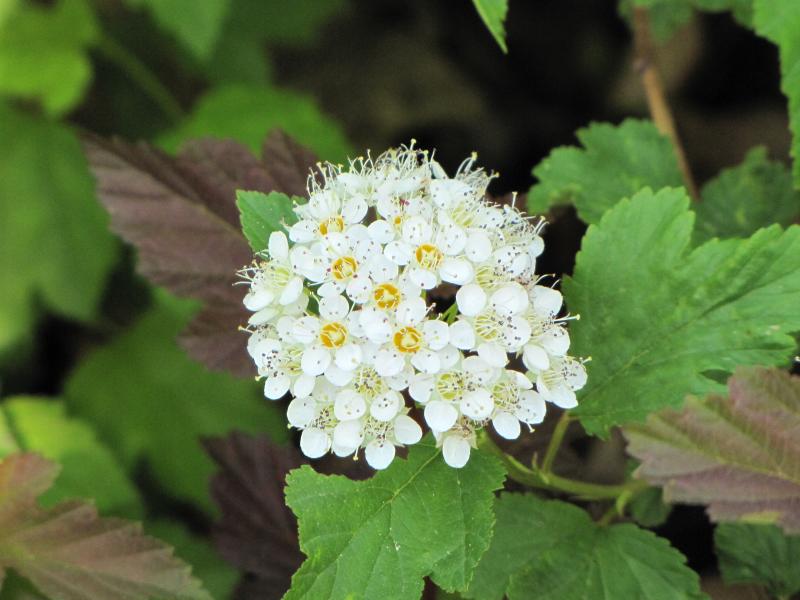 |
| Common Name Red Foliage Ninebark Botanical Name Physocarpus opulifolius Red Foliage This shrub grows 6-12 feet tall. Prefers sun to light shade. Produces white flowers in the spring to early summer. The caterpillars of Blue Azure butterflies love them! Red Foliage Ninebark Details |
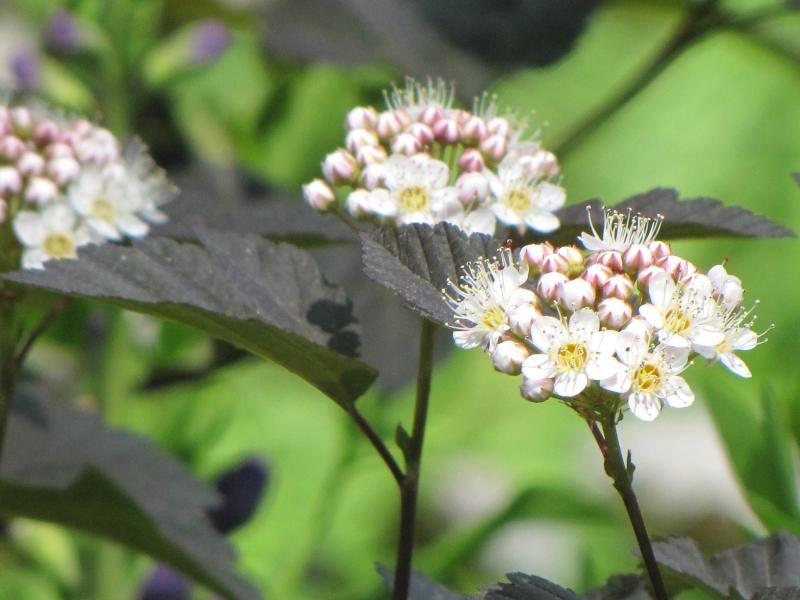 |
| Common Name White Spruce Botanical Name Picea glauca This evergreen tree grows 40-60 feet high and 10-20 feet wide. Has a typical Christmas tree shape. Very tolerant of many different soils. Prefers full sun. High tolerance for air borne salt mist. Great screen tree or large specimen plant. White Spruce Details |
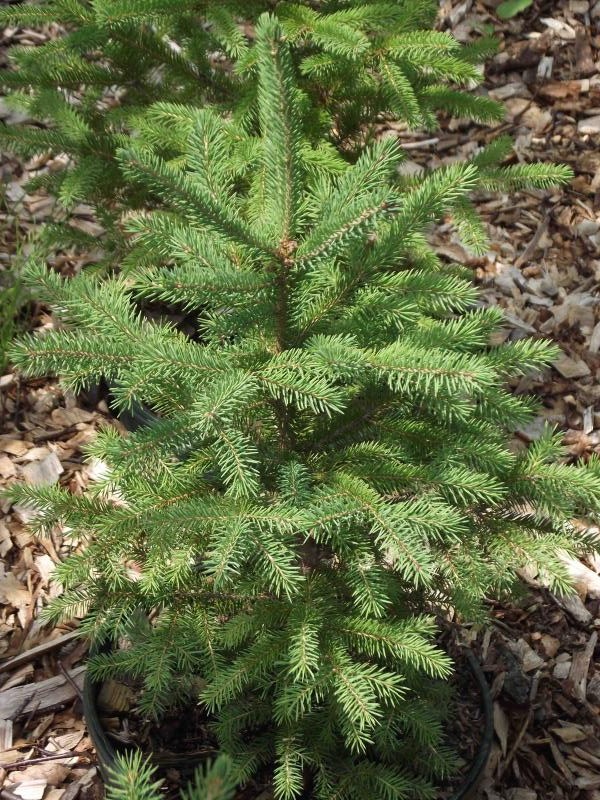 |
